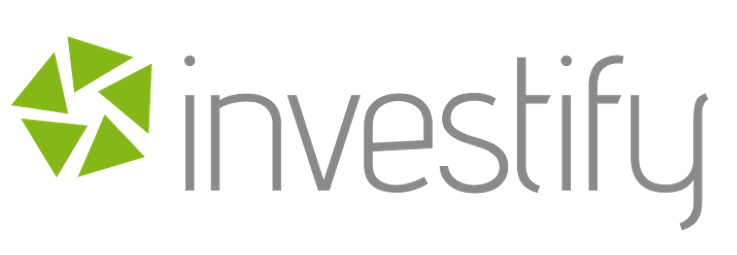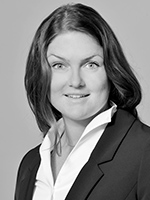|
Getting your Trinity Audio player ready...
|
|
LISTEN TO AUDIO VERSION:
|
Visual Vest’s philosophy and target group

Hello Mr. Zeitnitz, how would you describe VisualVest’s scope of services in no more than two sentences?
VisualVest is a digital asset manager, a so-called robo advisor. With VisualVest, private customers can invest online in widely diversified portfolios of ETFs or purely sustainable funds.
What is VisualVest’s investment philosophy?
We aim to support investors in their long-term asset accumulation. Our approach therefore follows a long-term strategy and consistently ensures that risks are well and broadly diversified. To this end, we use a multi-asset approach and attach great importance to global diversification in all our investment strategies. In the long term, we obtain the best results by combining global equity markets with traditional fixed-interest government bonds.
Consequently, these asset classes also constitute the investment focus of our portfolios. Depending on the risk class, the asset classes are weighted differently so that every investor finds a suitable strategy. In addition, sustainability is a key component of our investment strategies.
Which target groups does VisualVest address with its product range, and how many AuM and customers do you have in each segment?
We address an Internet-savvy target group that is looking for alternatives to call deposits and the like. Age only plays a minor role—of course, most young people are digital natives from the start, but many investors over the age of 45 also seek digital investment opportunities. We aim to make professional asset management also available to small savers, which is why we have deliberately set the entry barriers low. Customers can already start a VisualVest savings plan with a monthly savings amount of EUR 25. More than 80% of our customers have a savings plan, which is why the assets we manage increase continuously.
In the wake of the coronavirus crisis, our authors have spoken to a number of other robo advisors about the effects of the crisis on the industry:
To the interview series with the robo advisors
How much do private customers with an investment volume of EUR 10,000 have to pay for VisualVest’s services, and how do you compete with other robo advisors and traditional asset managers?
Robo advisors are able to offer their services at a lower price than traditional asset managers, since the entire investment process is automated and digitalized—they do not, for example, need to maintain an expensive branch network. The service fee for asset management at VisualVest is 0.6% per year, which makes us slightly less expensive than the robo advisor average.
Especially in the case of smaller investment sums, we are one of the cheapest providers. A private customer investing EUR 10,000 therefore only pays a service fee of EUR 60 per year.
Investment strategy of Visual Vest
What investment strategy do you pursue and how do you manage risk?
At VisualVest we rely on a combination of human expertise and computer-aided algorithms. The VisualVest experts and the Union Investment portfolio management (investment committee) permanently monitor the customers’ investments as well as the financial markets and, if necessary, adjust the investment strategies for the customers. To this end, we draw on decades of experience, complex databases and scientific models. Data on long-term volatility and correlation among the asset classes as well as the respective risk tolerance level of the portfolio determine the weighting of the respective asset classes. If changes in market conditions make it necessary to adjust the portfolio composition, we automatically carry out the optimizations for our customers. In order to be able to react even better and faster to long-term market trends, we have for some time been using the machine learning tool “Malina”, which was developed by AI (artificial intelligence) experts from our parent company Union Investment. Based on Malina’s forecasts, we have already optimized our investment strategies on several occasions.
In addition, VisualVest continuously reviews the funds included in the portfolios and exchanges them for new, better alternatives, if available. The service also includes an automatic rebalancing.
Since the launch of VisualVest we have remained true to our approach. Also in the future, our risk management will consistently focus on a long-term instead of a short-term perspective so as to avoid hectically switching back and forth.
USP of Visual Vest and competition
Meanwhile, there is a multitude of providers for robo advisory, B2B and B2C. How does VisualVest differentiate itself, i.e. what exactly is your USP?
We do not just have one USP, but several aspects that set us apart from other robo advisors:
- Sustainable investment: Sustainability is an important unique selling proposition of VisualVest, as VisualVest was the first robo advisor to invest in a diversified portfolio of sustainable funds. We are very thorough and demanding when it comes to selecting the funds for our investments. This applies all the more to sustainable funds.
- Union Investment subsidiary: As a 100% Union Investment subsidiary, VisualVest distinguishes itself from other providers because we combine the years of experience of an established investment company with the speed, simplicity and transparency of a modern online offering.
- Low entry barriers: At VisualVest, investors can invest in a fund portfolio starting at a savings amount of EUR 25 per month. This makes it possible for every saver to benefit from having their money professionally managed.
- Non-binding trial: VisualVest also offers interested parties the possibility of obtaining a non-binding investment proposal without having to enter personal data. This offer can then be saved, thereby allowing those interested to observe how the investment would have developed had it actually been made. This gives investors with little financial knowledge the advantage of being able to slowly familiarize themselves with the topic.
What is your (marketing) strategy to gain new customers? What role do partnerships play?
In marketing, too, we largely rely on online advertising measures, as this is the best way to reach the target group. The biggest challenge is to gain the customers’ trust in this new form of investment. This is why we focus on transparency and comprehensive information in understandable language.
Partnerships also play an important role at VisualVest. Being part of the Union Investment Group, VisualVest has set itself the task of transferring the knowledge gained about technical innovations and application scenarios to the Genossenschaftliche FinanzGruppe (cooperative financial group). VisualVest’s technology is therefore made available to the cooperative banks, including the Volks- und Raiffeisenbank institutions, as a so-called white label solution named “MeinInvest” (my investment). This allows the MeinInvest banks to apply the digital asset management solution to their own product range.
Which business area do you believe holds the greatest growth potential? What areas do you want to focus on in the future or add to your business?
At present and also in the future we place our stakes on savings plans. These offer investors a good average price, allow them to start with smaller amounts and not have to constantly search for the right time to enter the market. In addition, we see great growth potential in sustainable investment strategies. In the future, expanding existing services with new technological features will also play an important role.
Challenges of the coronavirus crisis
How has the coronavirus crisis affected your business so far? What are your biggest challenges right now?
Even though the financial markets recorded significant losses in the first quarter and our net inflows also fell in the short term, we were able to increase our AuM since the beginning of the crash. This was due to the fact that many investors regarded the low prices as an opportunity to open a new account or make a new deposit. In addition, numerous savings plans ensure that our AuM are rising steadily. The biggest challenge is to reassure investors and to strengthen their confidence in us.
We pursue a long-term approach, and we have explained this to our customers time and again. Many of our customers have understood this, which is why we saw only few sales during the coronavirus crisis. We always actively inform our customers when the markets become turbulent—we have also informed our investors through our blog and newsletter about our current approach and appropriate measures regarding the coronavirus topic.
How has the coronavirus crisis affected your customers’ return? How would you rate yourself compared to your competitors?
Our portfolios started the new year yet again on a positive note, following a very successful 2019. However, since the global outbreak of the virus pandemic in mid-February, stock markets worldwide have experienced the sharpest correction since the global economic crisis. Our portfolios naturally had to pay tribute to this development. This resulted in significant losses in the first quarter. Our balanced portfolio of classic ETFs (VestFolio 4) ended the first quarter with a loss in value of -10.24%. Our GreenFolios, portfolios of purely sustainable funds, performed slightly better in the first quarter. The shares and commodity asset classes incurred the largest losses. The fixed-interest bond segments of corporate bonds and the emerging markets also reported extremely negative performances. Only classic government bonds were able to benefit from the coronavirus crisis as a safe haven. In our portfolio structures, we therefore always ensure that government bonds are given a prominent weighting.
Unfortunately, the slightly positive performance in this asset class has only been able to cushion the clearly negative developments in all other asset classes to a certain extent. However, due to the higher weighting of government bonds, the lower-risk portfolios have clearly outperformed the higher-risk portfolios.
Since the beginning of April, we have witnessed a significant recovery across the entire range of our portfolios. Compared with other robo advisors, we weathered the crisis remarkably well and were able to convince with our broad diversification.
What medium to long-term risks do you expect the coronavirus pandemic to pose for you and the robo advisory market in general?
Due to the massive worldwide spread of the coronavirus and the associated containment measures, it is very likely that the world will enter a deep global recession. The impact on the economy will be all the greater the more countries are affected and the longer or more strongly the virus spreads. In addition, the length of time during which the containment measures paralyze public life and economic activity will also play a crucial role. A forecast of the further course of the pandemic and the duration of the necessary containment measures is subject to considerable uncertainty and cannot be predicted by anyone at present. Therefore, it is difficult to provide an outlook for the capital markets. Both this uncertainty and the risk of renewed price losses certainly pose a risk for us and the entire industry.
What opportunities could arise from the crisis?
Declining growth in the number of infections will be decisive for a sustained recovery of the markets. In the medium to long term, once the virus pandemic has been brought under credible control, this will open up opportunities for investors. The current crisis has cemented the low interest rate environment indefinitely and therefore increases the need for private savings and retirement products with investment funds, which allow investors to participate in the return opportunities of the capital markets. As a result of the coronavirus crisis, digitalization continues to advance even faster—both among private customers and companies. In the long run, this increases the acceptance of digital offers such as VisualVest.
Many thanks for the interview!
What current challenges await other robo advisors?
You can find an overview of all interviews here:












